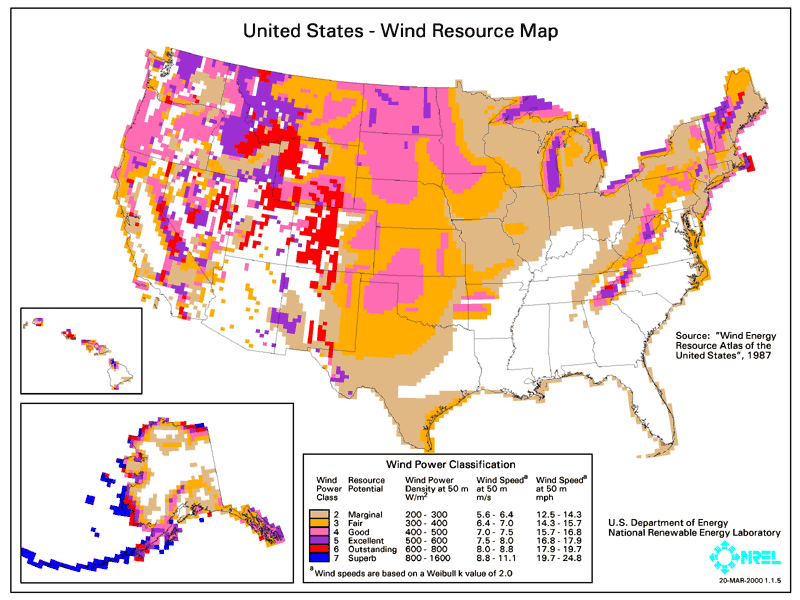Freeborn Wind Responds & AFCL Replies!
October 5th, 2017

Oh my, seems that Association of Freeborn County Landowners has struck a nerve. Freeborn Wind Energy (Invenergy) has responded:
Here’s the Response of AFCL to that Reply:
Reply_Association of Freeborn County Landowners_Petition for Task Force
There are some pretty wild statements, attributing motives and purposes that are off the wall:
- Apparently, aware that a task force could not meet its traditional statutory duties, AFCL argues for the creation of a new purpose — that such task force should be appointed to help resolve contested factual issues. Response, p. 7.
- AFCL appears to be seeking and Advisory Task Force that would persist through the contested case proceeding. Response, p. 8.
- AFCL’s request for a Scientific Advisory Task Force is, quite transparently, a second try to commence a rulemaking relating to wind turbine noise. Response, p. 8.
Oh my… Here’s the statute, and a review of that demonstrates that the first two of their presumptions are contrary to law, and ya know, there are some lawyerly rules (Rule 11 anyone?) against those types of arguments misrepresenting the law:
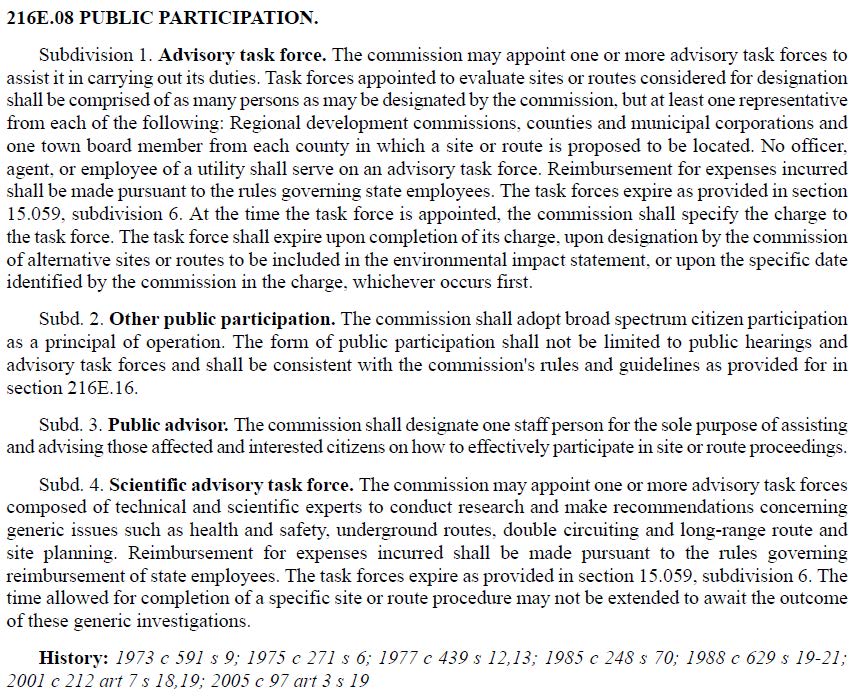
“AFCL argues for the creation of a new purpose?” No. The only purpose specified in the statute, but stated in a way that leave it open to other purposes, is one of “evaluating sites.” That’s in the second sentence of Subd. 1. What typically happens in a task force is that the application is reviewed, members comment on it and raise issues and proposed additional options. That’s called informing the record. That’s what task forces do, contribute their first hand knowledge of their community, and use that to evaluate sites, to propose alternate sites (which should be in the application but are not!). The charge is to be specified by the Commission.
“Persist through the contested case proceeding?” After the Chisago I task force, which intervened in the first Chisago contested case, Northern States Power made sure that wouldn’t happen again, and in 2001 pushed to get language into the statute that did exactly that:
The task force shall expire upon completion of its charge, upon designation by the commission of alternate sites or routes to be included in the environmental impact statement, or upon the specific date identified by the commission in the charge, whichever occurs first.
Minn. Stat. 216E.08, Subd. 1. DOH! No way can the task force “persist.”
“AFCL’s request for a Scientific Advisory Task Force is, quite transparently, a second try to commence a rulemaking relating to wind turbine noise.” No. I’ve filed a lot of rulemaking petitions over the years, and even more petitions for task forces. With the 2016 petition to the MPCA for rulemaking on wind noise, the Commissioner said that there wasn’t sufficient “understanding of wind turbine noise and its potential effects” for rulemaking:

Soooooooo, if there is insufficient understanding, how do we build that understanding to the point its sufficient to support rulemaking, how do we “monitor the science” for a decision regarding future rulemaking? Yes, seems to me this is what a Scientific Advisory Task Force is for! And it’s my belief that the last time this was done was the Stray Voltage report from the “Science Advisors”back in the ’90s, appointed by the Public Utilities Commission to consider stray voltage:
This report came up several times in the Arrowhead Transmission Dockets in Minnesota and Wisconsin, and was not at all helpful in advancing understanding of stray voltage, that took a few successful plaintiffs, like Zumberge and Cook in Minnesota, but this is a way to develop the record. Worth noting is that this Science Advisors report was before Freeborn Energy’s attorney Lisa Agrimonti’s time… though I know Mike Krikava would remember!
I have a rulemaking petition for both Minn. R. Ch. 7030 and Ch. 7854 on deck, but as far as I can see, nothing has changed in MPCA’s “understanding” of wind noise and impacts on human health. We need to get the information into the system somehow. A Scientific Advisory Task Force — that is why this statute was created, that’s the purpose! DOH!
The Response of Freeborn Wind Energy has zero credibility. Did they make these arguments up while sitting around the bar after the Line 3 hearings last week? Good grief…
Bent Tree Wind Farm Noise Monitoring Report
October 2nd, 2017

On April 12, 2017, the Public Utility Commission ordered noise monitoring for the Bent Tree Wind Project after numerous complaints pressured for action on those complaints. Bent Tree is located in Freeborn County just north east of Albert Lea, Minnesota, north of Interstate 90, and on the west side of Interstate 35, opposite where they now want to put up the Freeborn Wind Farm, south of I-90 and east of I-35. They put up monitors at a few locations near the homes of those who filed complaints, and then, for some reason the turbines near those homes are off (Curtailment? Why am I suspicious? Apparently they’ve never been off at other times.). Then they took the monitors away.
But the study is “complete?” Here it is.
On page one, the cover letter, they admit there are times of non-compliance. What’s important in this is that the problematic “noise” is the infrasound, which is found in “C weighted” scales, and not the “A weighted” scale that is the subject of Minn. R. 7030. Further, the Minnesota Rules Ch. 7030 does not address impulsive sounds, such as sounds from a gun range, or some sound from wind turbines.
| 7030.0010 | INCORPORATION BY REFERENCE. |
| 7030.0020 | DEFINITIONS. |
| 7030.0030 | NOISE CONTROL REQUIREMENT. |
| 7030.0040 | NOISE STANDARDS. |
| 7030.0050 | NOISE AREA CLASSIFICATION. |
| 7030.0060 | MEASUREMENT METHODOLOGY. |
| 7030.0070 | SOUND ATTENUATION MEASUREMENT METHODOLOGY. |
| 7030.0080 | VARIANCE. |
MPCA’s Commissioner, John Linc Stein, agrees that the Minnesota Rules do NOT cover infrasound, and there are no rules covering infrasound, but yet will not initiate rulemaking:

WHAT!?!?!?!
Back to the studies. the protocol for the “study” is taken from the Minn. R. Ch. 7030, Measurement Methodology. Monitoring data was excluded if the wind speed was over 11 mph, but for the Langrud monitor, the report says that wind speed was not over 11 mph. Is that reasonable? Look at average wind speeds generally, considering that higher wind speed is desirable for generating electricity (click for larger version):
When wind speeds are high, that is when the noise from the turbines is most unbearable, and under the report protocol, when wind speeds are high, were excluded. Average wind speed n the Bent Tree area is 15.7 – 16.8. So in the chart above, it says 0% were excluded due to high wind. Does that mean there were no times that the wind was over 11 mph? That’s doubtful, although spring and fall are times with higher wind, typically, but, color me skeptical.

But yet Table 4-1 says wind speed did not go over 11 mph during the monitoring, and so no data where wind was over 11 mph was excluded. Curtailment is also unclear, because we do not know what turbines were curtailed, if it was only ones near the monitors, or the entire project (usually is is some but not all). It also says results were skewed by bird chirping and insect noise, which would not have been present in early spring or fall. WHAT?!?! And early spring is planting time so lots of farm equipment out, and fall is harvest. Makes no sense.
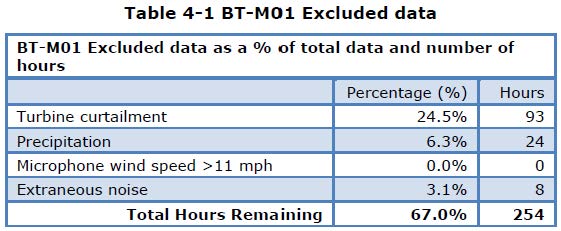
So how is the report valid?
Dave Langrud, a landowner in the Bent Tree footprint, has tracked when the turbines were off and on, and we’re working on comparing those times to the times in the report — they do have some info in this report for comparison showing time they admit the turbines were off:

And there were C weighted measurements, note how high these go:
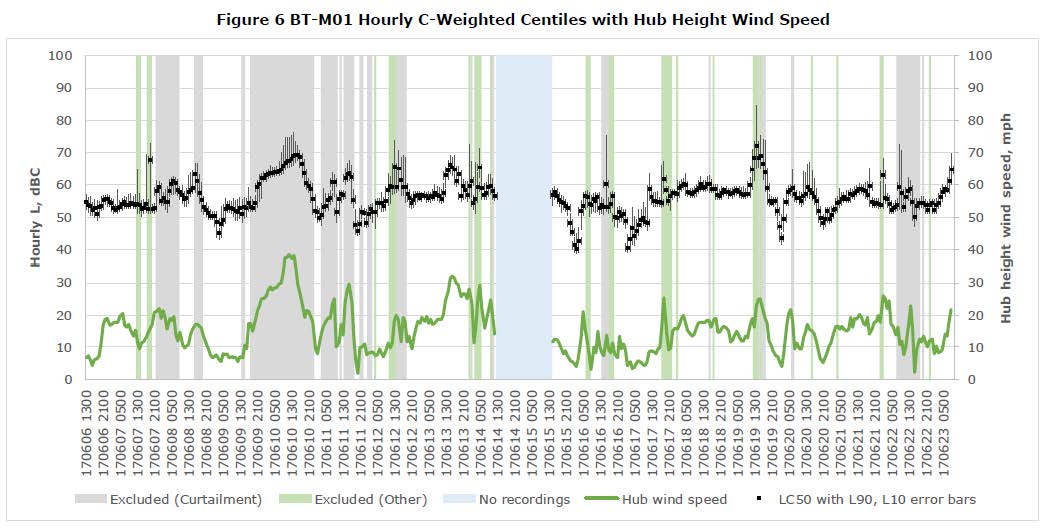
We’ve submitted a Data Practices Act Request for more data:
Nothing has showed up yet.
Great turnout and input in Albert Lea last night
September 21st, 2017
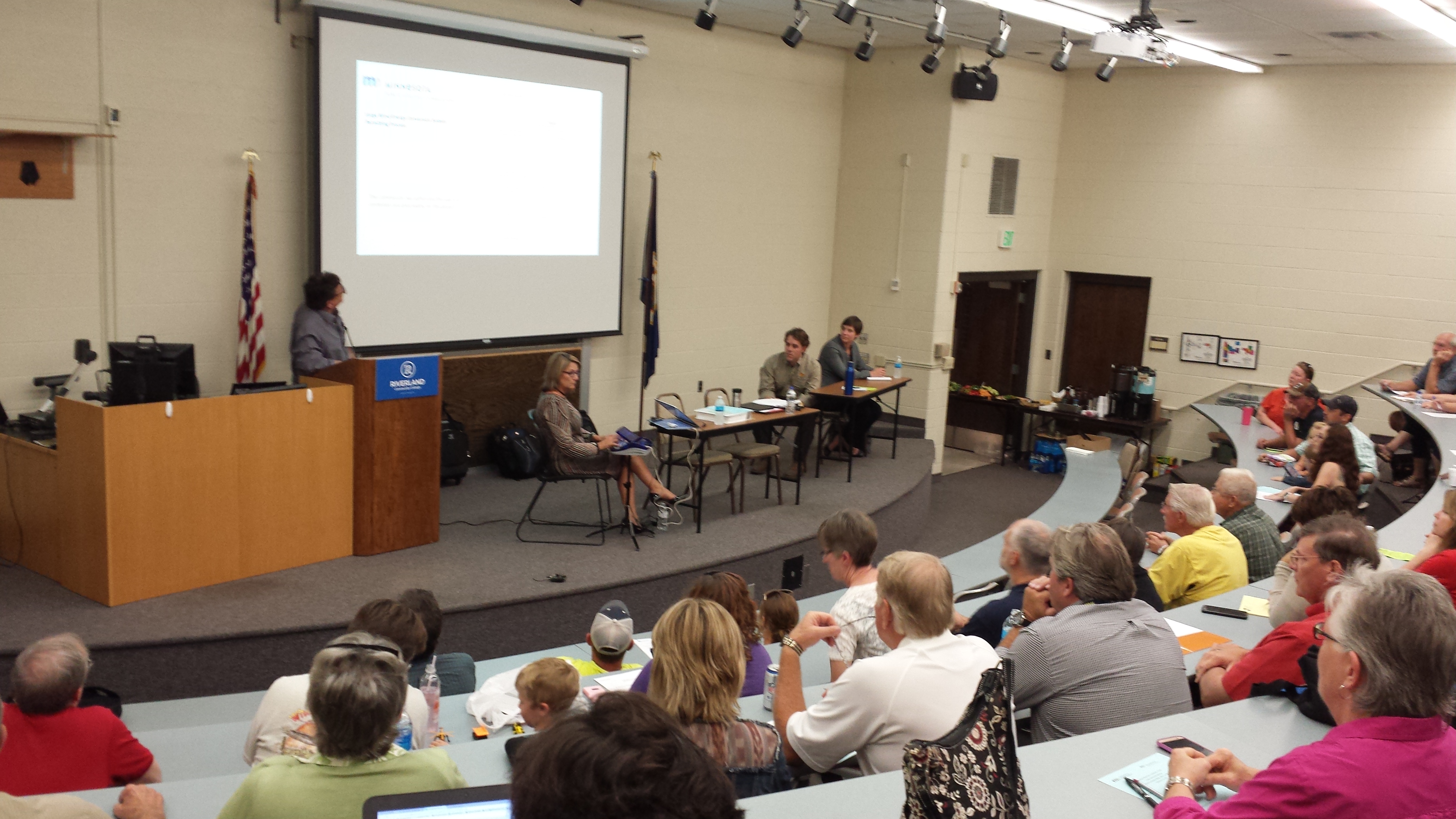
Albert Lea, MN — Last night was the Dept. of Commerce information meeting where Commerce collected comments concerning (love alliteration, eh?) the Draft Site Permit it’s putting together for the Freeborn Wind Project.
For the Public Utilities Commission docket on this project, go HERE and then search for docket 17-410.
Before heading over to the meeting, I filed this Motion for Certification and Petition for Task Force and Scientific Advisory Task Force. Because this is the first contested case for a wind project siting docket in Minnesota, and because we’re operating under Minn. R. ch. 1405 Power Plant Siting Act for procedure, and because the wind siting chapter, Minn. Stat. 216F, specifically exempts wind from MOST of the Power Plant Siting Act, but specifically not 216E.08 which authorizes Task Forces, and most importantly, because there are material issues of fact about which Task Forces could help build the record, this is oh-so-important. Let’s get going on it!
The place was packed, and many more came in after I took this photo, it was standing room only.

And folks didn’t come only for the treats (great treats by the way, especially for this camper working in an office in the woods!). One man was very upset early on, jumping in during Rich Davis’ presentation, riled because he did not get notice about this project until it had already been applied for. This is a legitimate issue, and because there was no Certificate of Need, there was no legal requirement that notice be provided until after the application had been accepted as complete. He stormed out, not wanting to sit through all the “blah-blah” at the front end of this meeting (it did go on and on and on).
Rich Davis’ presentation did include some process explanation that was more specific about what comprises a contested case than that provided by PUC’s Mike Kaluzniak (the latest “Public Advisor” quit, and they’re looking for someone again). They never want to talk about “Intervention” and explain how people can become parties and when the deadline is to decide and file. They didn’t talk about the public comment period after the public hearing or include that in the powerpoint. They didn’t talk about the opportunity to file exceptions to the report of the Administrative Law Judge. etc… GRRRRRRR. And because this case is an odd one, the first contested case for wind, we’re in need of procedural guidance, what there is, and there is much that is known and which needs to be disclosed.
The Association of Freeborn County Landowners was there, filled the room, and did a tremendous job. Very specific comments, most with documents supporting their comments. Like wow, for the first time out the gate, very impressive. Keep up the good work!
Here’s the handout I’d passed around:
How 2 Comment on the Freeborn Wind Project
COMMENTS ARE DUE OCTOBER 9, 2017
Comments by mail or email – again, due by 4:30 October 9, 2017:
Richard Davis richard.davis@state.mn.us
MN Dept of Commerce
85 7th Place East, Suite 500
St. Paul, MN 55101-2198
Or better yet, eFile in PUC’s eDockets system so everyone can see and consider your comment (otherwise they end up in a big long bundle of a pdf with everyone else’s comments), again, due 4:30 October 9, 2017:
Register: https://www.edockets.state.mn.us/EFiling/ Registration is easy and fast. Then follow prompts to eFile!
What was best about last night’s meeting is that the comments were specific and on point. I have 17 pages of notes, single spaced, and close to carpal tunnel from writing it all. Way to go, folks!! Meeting minutes will be posted on the Commerce site sometime soon, and I’ll post.
Also, soon the ALJ’s Scheduling Order/First Prehearing Order will be issued, and I’ll also post the official schedule here.
++++++++++++++++++++++++++++++++++
Also, although in 1995 the legislature specifically exempted wind siting from the Power Plant Siting Act, some sections DO apply, including the criteria for siting, now Minn. Stat. 216E.03, Subd. 7:
Subd. 7.Considerations in designating sites and routes.
(a) The commission’s site and route permit determinations must be guided by the state’s goals to conserve resources, minimize environmental impacts, minimize human settlement and other land use conflicts, and ensure the state’s electric energy security through efficient, cost-effective power supply and electric transmission infrastructure.
(b) To facilitate the study, research, evaluation, and designation of sites and routes, the commission shall be guided by, but not limited to, the following considerations:
(1) evaluation of research and investigations relating to the effects on land, water and air resources of large electric power generating plants and high-voltage transmission lines and the effects of water and air discharges and electric and magnetic fields resulting from such facilities on public health and welfare, vegetation, animals, materials and aesthetic values, including baseline studies, predictive modeling, and evaluation of new or improved methods for minimizing adverse impacts of water and air discharges and other matters pertaining to the effects of power plants on the water and air environment;
(2) environmental evaluation of sites and routes proposed for future development and expansion and their relationship to the land, water, air and human resources of the state;
(3) evaluation of the effects of new electric power generation and transmission technologies and systems related to power plants designed to minimize adverse environmental effects;
(4) evaluation of the potential for beneficial uses of waste energy from proposed large electric power generating plants;
(5) analysis of the direct and indirect economic impact of proposed sites and routes including, but not limited to, productive agricultural land lost or impaired;
(6) evaluation of adverse direct and indirect environmental effects that cannot be avoided should the proposed site and route be accepted;
(7) evaluation of alternatives to the applicant’s proposed site or route proposed pursuant to subdivisions 1 and 2;
(8) evaluation of potential routes that would use or parallel existing railroad and highway rights-of-way;
(9) evaluation of governmental survey lines and other natural division lines of agricultural land so as to minimize interference with agricultural operations;
(10) evaluation of the future needs for additional high-voltage transmission lines in the same general area as any proposed route, and the advisability of ordering the construction of structures capable of expansion in transmission capacity through multiple circuiting or design modifications;
(11) evaluation of irreversible and irretrievable commitments of resources should the proposed site or route be approved; and
(12) when appropriate, consideration of problems raised by other state and federal agencies and local entities.
(c) If the commission’s rules are substantially similar to existing regulations of a federal agency to which the utility in the state is subject, the federal regulations must be applied by the commission.
(d) No site or route shall be designated which violates state agency rules.
(e) The commission must make specific findings that it has considered locating a route for a high-voltage transmission line on an existing high-voltage transmission route and the use of parallel existing highway right-of-way and, to the extent those are not used for the route, the commission must state the reasons.
This is the criteria that we need to focus on when presenting issues, testimony, comments, briefs and exceptions to the ALJ’s report.
More coming soon! In the meantime, it’s time to break camp and head out! Myre-Big Island is a great park. Though the bathroom/showers at the Big Island campground suck, they’re superb at the other campground in the park (White Fox). Yes, posted a campground review, inquiring minds need to know where the good state park bathrooms are!

Here’s the view right across the road night before last, the site is fronting the lake:
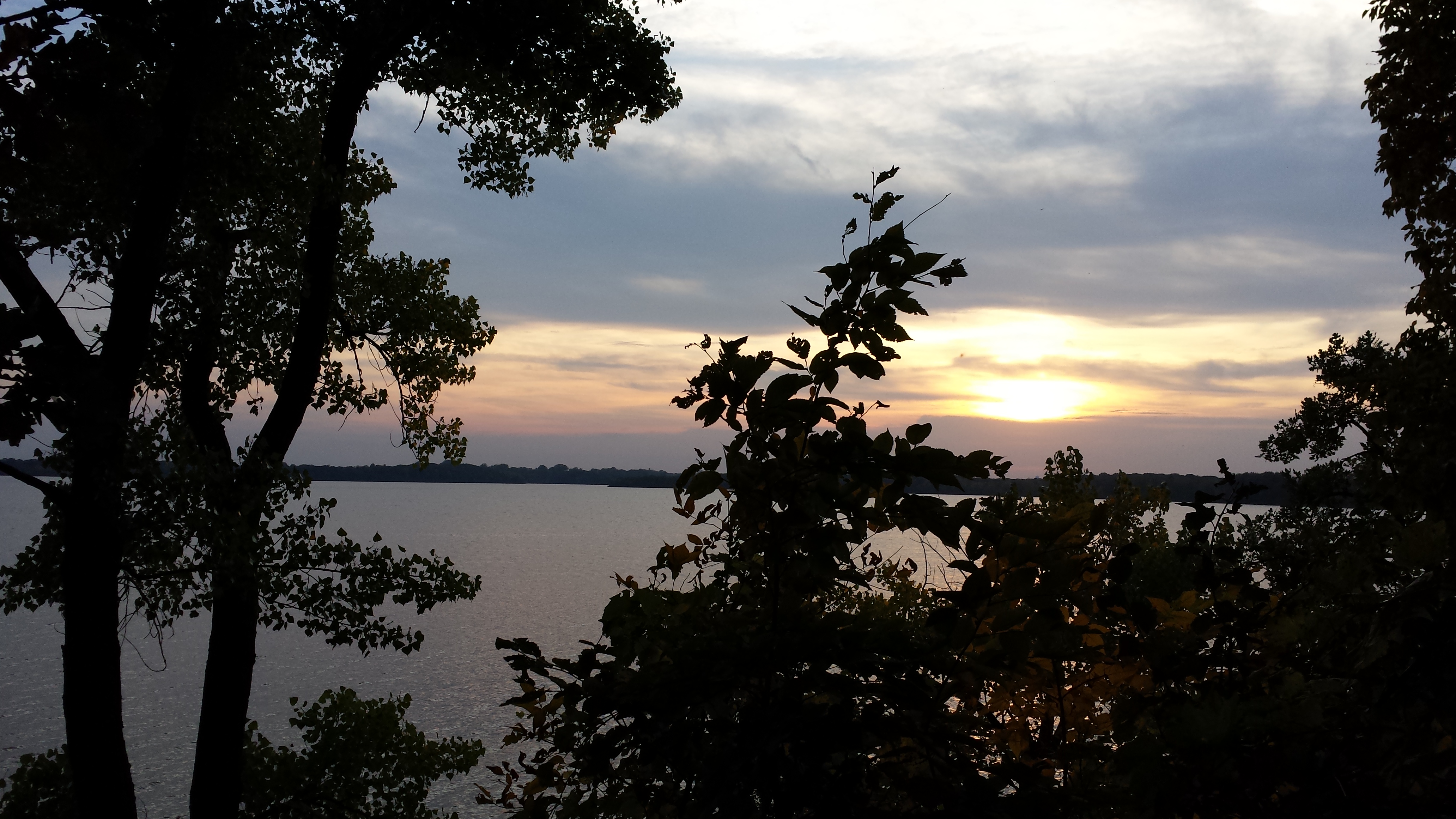
Freeborn Wind Application HERE!
September 15th, 2017
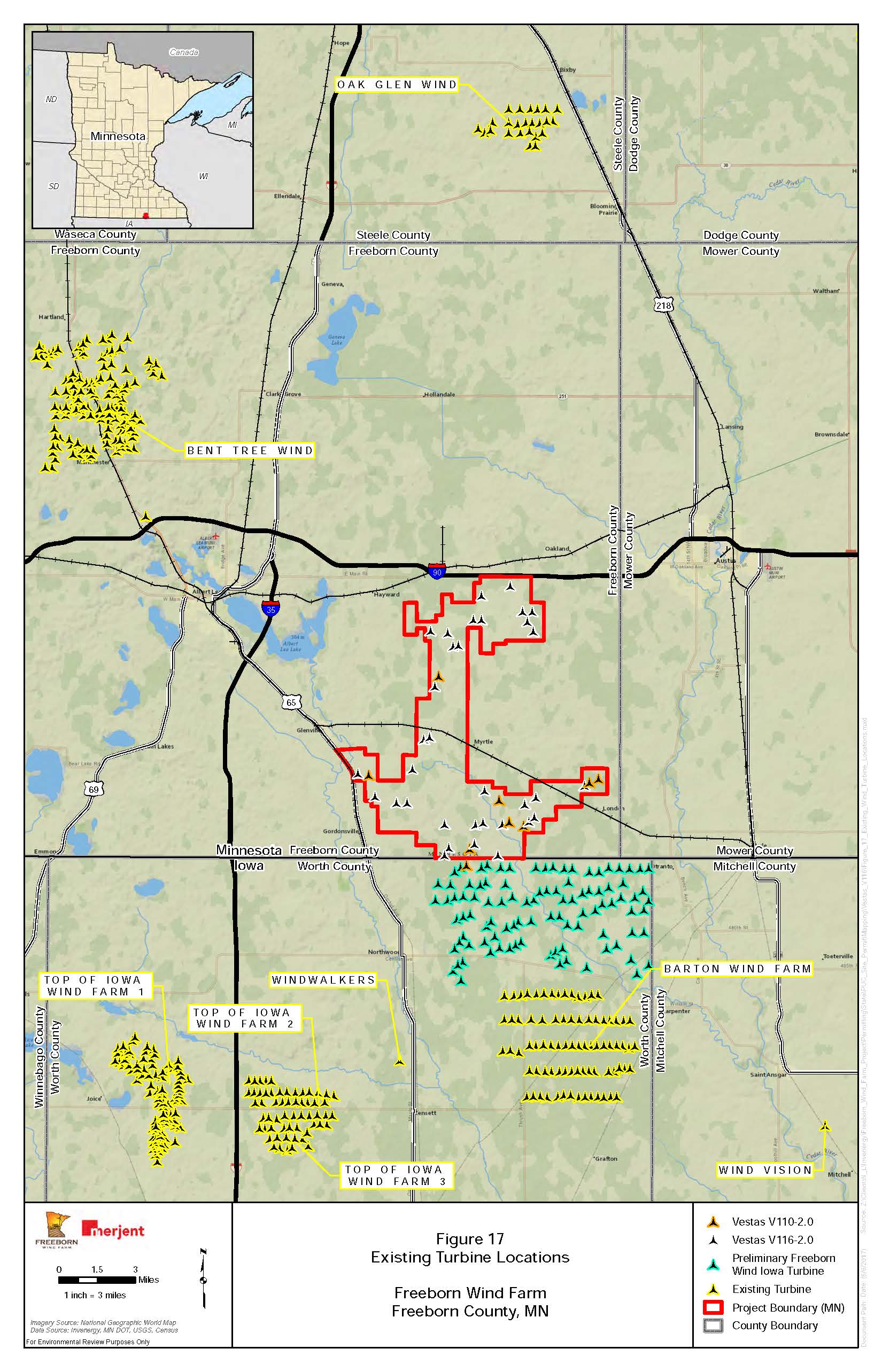
For all of you planning to comment on the Freeborn Wind application, whether at the meeting Thursday (September 20) in Albert Lea or in writing, here is the Application and appendices to review. Remember that for your comments to carry any weight, they need to be specific about what is and is not in the application and what Commerce needs to address in its Draft Site Permit. Focus!!!
Siting_Initial Filing_Application_Narrative_20176-132804-01
Siting_Initial Filng_Figures1-17_20176-132804-02
Siting_Initial Filing_App A_Agency Correspondence
Siting_Initial Filing_App B_Noise analysis20176-132804-04
Siting_Initial Filing_App C_ShadowFlickerAnalysis_20176-132804-05
Siting_Initial Filing_App D_TelecomReports_20176-132804-06
Siting_Initial Filing_App E_MarketImpactAnalysis_20176-132804-07-1
Siting_Initial FIling_App F_Tier3WildlifeStudies_20176-132804-08
Assoc of Freeborn County Landowners – Intervention Granted
September 12th, 2017

The Minnesota part of the Freeborn County wind project is the site in red, above.
The Association of Freeborn County Landowners has been granted intervention, we’re a party!!!
And a footnote for those wonks interested in Minnesota Rules and OAH and Public Utilities Commission procedure:

For more information about this docket, the application and the filings thus far, go HERE and search for Public Utilities Commission docket 17-410.
